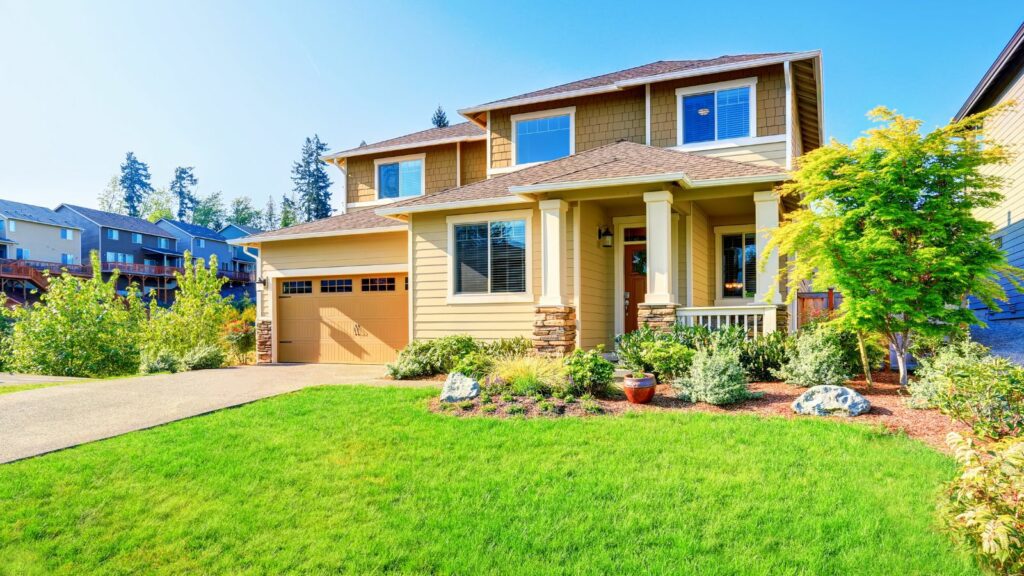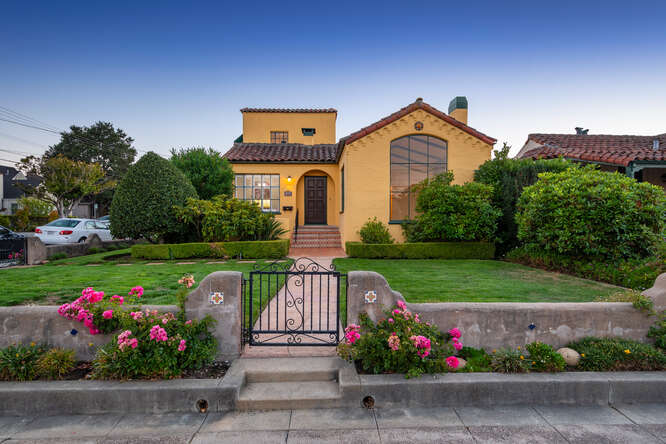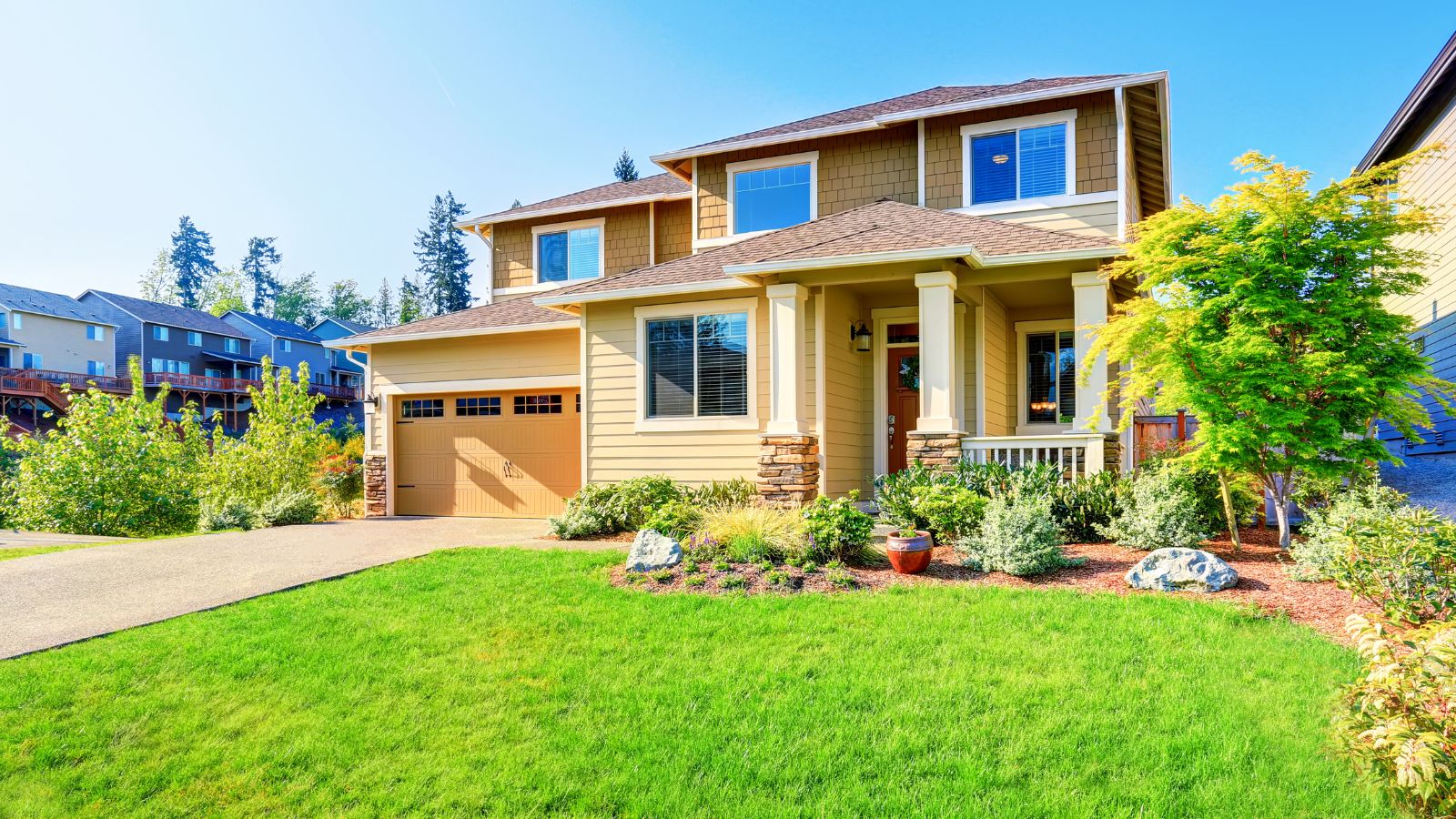First impressions are crucial, and nowhere is this truer than in the real estate market. The visual appeal of a home’s exterior, or its curb appeal, plays a pivotal role in drawing potential buyers. As they approach a property, the exterior sets the tone and expectations for what lies inside. A well-maintained facade, vibrant landscaping, and even the condition of the driveway can significantly influence a buyer’s decision-making process. In today’s competitive housing market, enhancing curb appeal is not just an option—it’s a strategic necessity for sellers aiming to attract buyers and secure the best possible sale price.

The Psychology Behind First Impressions
Humans are naturally drawn to beauty and order, and these instincts significantly influence their perceptions of property. The exterior of a home often acts as a snapshot of what potential buyers can expect inside, setting the psychological tone for their entire viewing experience. A positive first impression can enhance a buyer’s emotional connection to a property, making them more inclined to consider it as their future home.
Research underscores the importance of aesthetic appeal in real estate transactions. A study by the University of Alabama found that homes with high curb appeal sold for 7% to 14% more than similar houses with an uninviting exterior. This statistic reveals that the initial visual presentation of a home can directly impact its perceived value and desirability.
The power of a first impression lies in its ability to invoke an immediate emotional response. When buyers feel an instant attraction to a property, they are often willing to overlook minor imperfections that might be found during a closer inspection. Conversely, if the initial view is negative, it sets a critical tone that can be difficult to overturn, no matter the interior charms. Thus, ensuring the home presents well from the moment it is viewed from the street is not just beneficial; it is crucial for a successful sale.
Key Elements of Curb Appeal
The curb appeal of a home hinges on several key elements that, when optimized, can significantly enhance the property’s attractiveness and perceived value. Landscaping, the condition of the paint, and the maintenance of exterior fixtures play pivotal roles in forming that crucial first impression.
Landscaping: The front yard is often the first point of contact for potential buyers. Neat, well-planned landscaping suggests meticulous care and attention to detail, qualities buyers appreciate and expect in the rest of the property. Even simple measures like ensuring the lawn is mowed and free of weeds can make a significant difference.
Paint and Exterior Finishes: The condition of a home’s paint can instantly signal care or neglect. Peeling or faded paint is a deterrent, while a fresh coat can transform a home’s appearance dramatically. Similarly, clean siding, well-maintained fences, and polished fixtures such as door handles and mailboxes contribute to the overall aesthetic and appeal of the home.
Consistency and Style: The architectural style of the home should guide the choices made for its exterior features. Consistency in design and decor enhances the home’s character, making it more appealing and helping it stand out in potential buyers’ minds. For example, a modern home might benefit from sleek, minimalist landscaping, while a Victorian home might look best with more elaborate floral arrangements and classic paint colors.
Improving these elements does not always require significant investment but rather attention to detail and consistency in maintenance and style. By focusing on enhancing each component, sellers can effectively improve their home’s curb appeal, thus setting a strong foundation for attracting potential buyers.
Landscaping and Greenery
Landscaping is more than just a decorative element; it’s a critical component of curb appeal that can significantly influence a buyer’s perception and interest. Thoughtful landscaping enhances the natural features of a property, promotes a welcoming atmosphere, and can even signify the ease of maintenance a new homeowner might expect.
Choosing the Right Plants: The selection of plants should complement the home’s overall architecture and existing natural features. For example, ornamental grasses and sleek shrubs suit modern homes, while traditional properties can be enhanced with perennial borders and flowering trees. It’s also important to consider the climate and choose plants that will thrive with minimal upkeep.
Design and Layout: A well-designed landscape doesn’t just happen; it’s planned. Symmetry and clear lines can give a sense of order and elegance, while varied plant heights and colors add depth and interest. Strategic placement of trees can frame the house perfectly or hide less appealing elements like HVAC units and garbage cans.
Maintenance: An overgrown garden can detract from the home’s beauty, implying a burden rather than a benefit. Regular trimming, weeding, and mulching are essential to keep the garden looking its best. Seasonal upkeep, such as raking leaves and pruning bushes, also plays a crucial role in maintaining an attractive and inviting exterior.
Effective landscaping requires a balance between aesthetic appeal and practicality. It not only boosts the home’s visual appeal but also plays a functional role in setting the property apart in a competitive market. Homeowners who invest in their property’s green spaces often find that this enhances not just their curb appeal but also the overall value of the home.

Maintaining the Exterior
Regular maintenance of a home’s exterior is crucial in preserving its appeal and ensuring it remains attractive to potential buyers. This section focuses on essential maintenance tasks that keep a property looking its best and can significantly impact its market value and sale potential.
Routine Cleaning and Repairs: Regular cleaning of gutters, windows, and surfaces not only maintains the home’s appearance but also prevents damage. For instance, clogged gutters can lead to water damage, which can affect the home’s structural integrity. Similarly, fixing cracked siding or loose roof tiles promptly prevents further deterioration and keeps the home looking well cared for.
Painting and Touch-ups: A fresh coat of paint is one of the most cost-effective ways to refresh a home’s exterior. Choosing neutral, appealing colors can make the home more attractive to a broad audience. Touch-ups are particularly important in areas that are prone to wear and tear, such as window frames and door edges.
Seasonal Maintenance: Each season brings specific challenges and maintenance needs. In spring, it’s important to check for damage caused by winter weather and to clean or replace HVAC filters. Summer might call for landscaping updates and pest inspections, while fall is the time to prepare for colder weather by checking insulation and sealing gaps in windows and doors.
By adhering to a regular maintenance schedule, homeowners ensure that their property remains in peak condition, reducing the chance of potential buyers being turned off by signs of neglect. Effective maintenance not only helps preserve the home’s value but also reinforces the property’s appeal in the competitive real estate market.
Cost-Effective Upgrades
Investing in the right upgrades can significantly enhance a home’s curb appeal without necessitating a large expenditure. Strategic, cost-effective improvements can make a substantial difference in how a property is perceived by potential buyers, potentially increasing its market value and decreasing the time it spends on the market.
High Impact, Low Cost Upgrades:
Front Door: Replacing or repainting the front door can dramatically change the facade of a home. A bright, welcoming color or a sleek, modern design can make a strong statement.
Lighting: Updating exterior lighting fixtures not only improves the home’s visibility and security but also adds an element of style. Solar-powered lights lining the walkway or accent lighting to highlight landscaping can create an inviting ambiance after dark.
Hardware: Replacing outdated hardware (like door handles, house numbers, and mailbox) can subtly enhance the exterior aesthetics. These small details contribute to the overall impression of quality and care.
Before and After Effect:
Illustrating the impact of these upgrades with before-and-after comparisons can effectively demonstrate their value. For instance, a faded and chipped front door compared to a newly painted or replaced one shows a clear enhancement in curb appeal. Similarly, new lighting fixtures can transform a dimly lit path into a warm, welcoming walkway.
Advice from Professionals: Real estate professionals often highlight that minor cosmetic upgrades can influence a buyer’s first impression more than costly renovations. These professionals recommend focusing on changes that potential buyers can immediately notice and appreciate, ensuring they enter the home with a positive mindset.
Implementing these cost-effective changes not only makes the property more appealing but also represents a smart investment. Homeowners who focus on impactful, budget-friendly improvements can enhance their home’s curb appeal with minimal financial outlay, maximizing their return on investment when selling.
Future Trends in Curb Appeal
Staying ahead of the curve in real estate involves anticipating and adapting to emerging trends in home design and landscaping. As buyer preferences evolve, so do the elements that define compelling curb appeal. Here, we explore how upcoming trends are shaping the presentation of homes on the market, potentially influencing buyer decisions and expectations.
Sustainability and Eco-Friendly Design: Eco-consciousness is becoming increasingly important to homebuyers. Features that promote sustainability, such as drought-resistant landscaping, rain gardens, and the use of recycled or eco-friendly building materials, are becoming key selling points. These elements not only appeal to environmentally aware buyers but also offer long-term cost savings in maintenance and utilities, enhancing their overall attractiveness.
Smart Home Features: Technology continues to integrate into everyday life, and homes are no exception. Smart lighting, security cameras, and other connected features that can be controlled via smartphone enhance both the functionality and appeal of home exteriors. Incorporating these technologies can make a property stand out, especially among tech-savvy buyers looking for modern conveniences.
Bold Colors and Personalized Exteriors: While neutral tones have traditionally been favored for exteriors, there is a growing trend towards bolder, personalized choices that reflect homeowners’ personalities. This trend is about striking a balance—distinctive enough to attract attention while still fitting within the aesthetic standards of the neighborhood.
Outdoor Living Spaces: As more people look to their homes as a source of comfort and entertainment, the emphasis on outdoor spaces continues to grow. Well-designed patios, outdoor kitchens, and even outdoor home offices are becoming crucial components of curb appeal. These features suggest a lifestyle that is attractive to today’s buyers, who often value functional outdoor areas that extend the living space.
By keeping an eye on these trends, sellers can strategically update their homes to meet current and future buyer preferences, positioning their properties as modern and desirable in a competitive market. This forward-thinking approach not only enhances a home’s curb appeal but also anticipates the evolving expectations of potential buyers, thereby fostering quicker sales and potentially higher offers.
Maximizing Your Home’s Potential
The importance of curb appeal in selling your home swiftly and at a competitive price is undeniable. It is the first impression that can captivate potential buyers, setting the stage for a successful transaction. Enhancing your home’s curb appeal involves careful planning and strategic upgrades—from fresh paint and new lighting to thoughtful landscaping and modern technological integrations.
For those ready to sell, working with a real estate professional can significantly ease the process. Expert advice is crucial in identifying the most impactful enhancements to elevate your home’s exterior. Whether it involves simple cosmetic tweaks or more extensive renovations, each improvement can significantly increase your property’s marketability.
If you’re considering selling your home and want to ensure it stands out in the competitive market, contact me. With specialized expertise in creating irresistible curb appeal, I can guide you through the best practices to transform your property’s first impression. Let’s work together to maximize your home’s potential and achieve the best possible outcome in your home selling journey.





